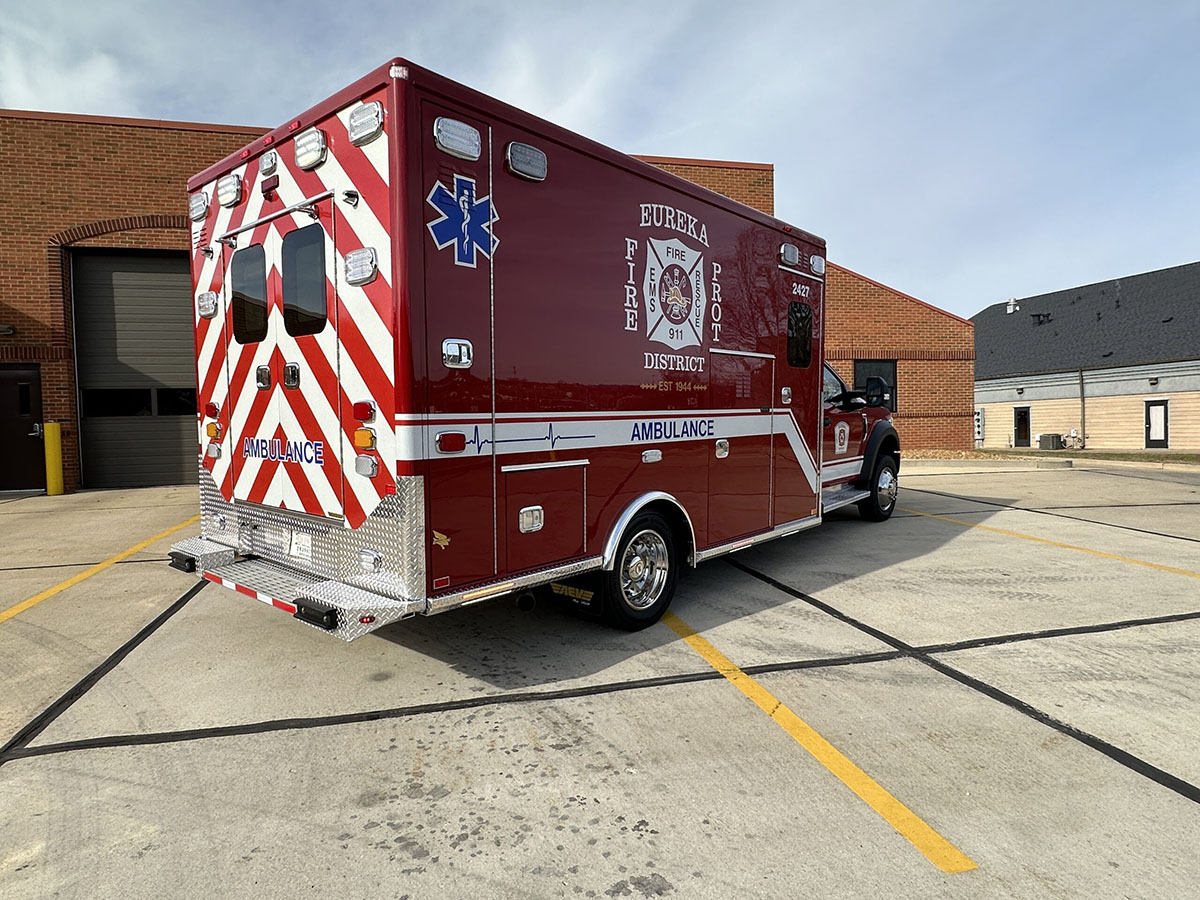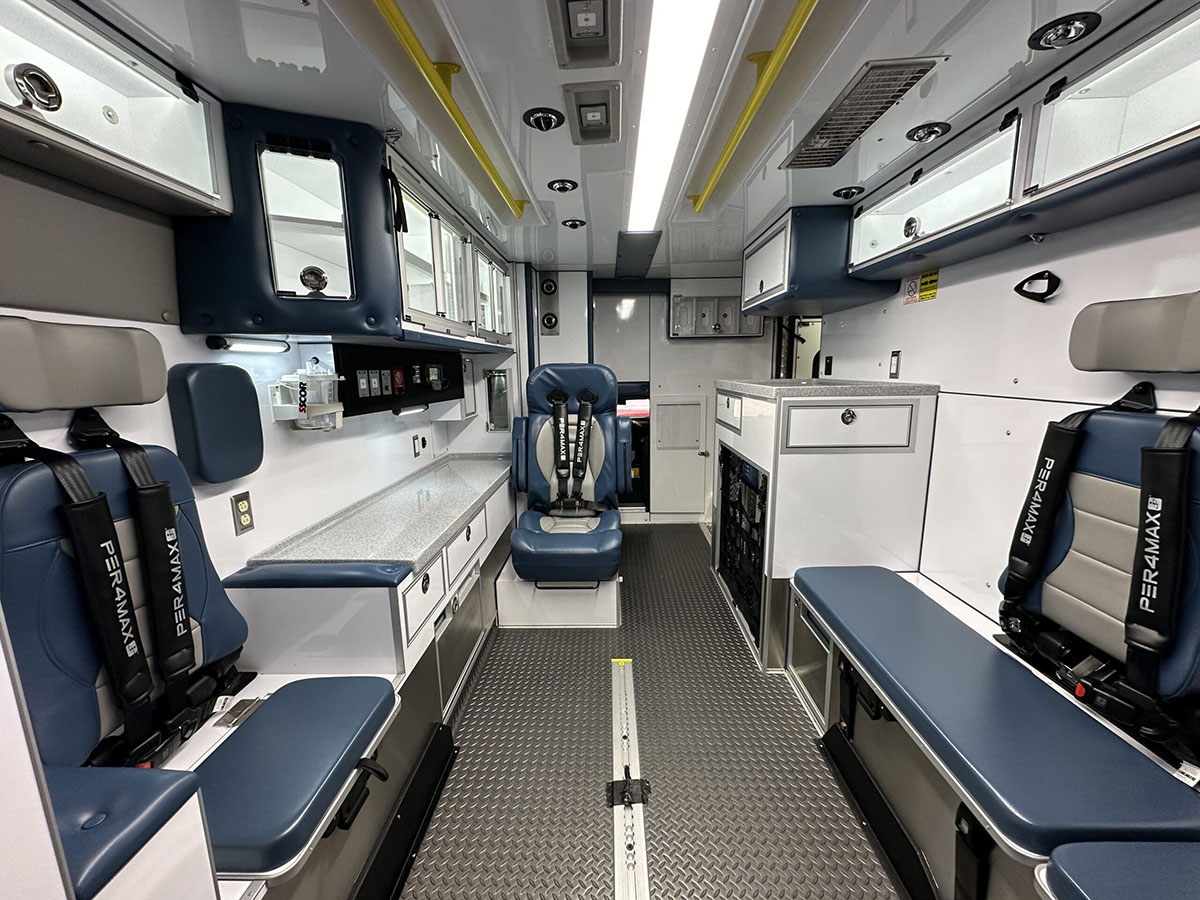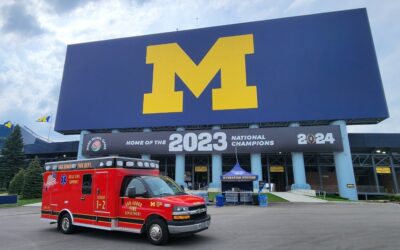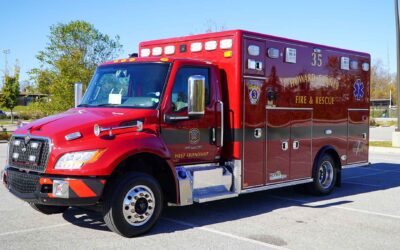
American Emergency Vehicles built this Type 1 Traumahawk ambulance on a Ford F-550 chassis powered by a 6.7-liter diesel engine for Eureka (MO) Fire Protection District. (Photos courtesy of American Response Vehicles.)
By Alan M. Petrillo
Eureka (MO) Fire Protection District has replaced one of its three front line advanced life support (ALS) ambulances with a new American Emergency Vehicles (AEV) Type 1 Traumahawk.
The district covers 30,000 residents in a mix of suburban and rural territory comprising 82-square miles in southwest St. Louis County and northern Jefferson County. William Stamberger, deputy chief and chief medical officer, says Eureka has three stations staffed by 45 firefighter/paramedics, running three ALS ambulances, three engines and one aerial ladder truck.

Eureka chose the door-forward design on its new Type 1 AEV Traumahawk.
“Our replacement schedule calls for ambulances to be replaced about every six years, so it was time for us to get a new rig,” Stamberger points out. “We were pleased with our existing AEV Type 1 ambulances, and chose to go with a new AEV Traumahawk, but with a few changes to our previous models.”
Those modifications include changing to a door forward design on the curb side of the rig, an extended bench seat that can accommodate a backboard to allow transport of two patients if necessary, an action area on each side of the repositioned CPR seat, an ALS cabinet at the head of the bench seat, and a sharps container underneath, Stamberger says.

The AEV Traumahawk built for Eureka has a 6-inch body drop for easier access.
Randy Barr, AEV’s director of sales, says Eureka’s Type 1 is built on a Ford F-550 chassis with a patient module that 176-inches long, 94-inches wide, with 74-inches of headroom. “The Traumahawk is powered by a 6.7-liter diesel engine,” Barr says, “and has a six-inch body drop for easier access.”

The cab area on the new Traumahawk.
Other features include an Arctic Wedge condenser on the front of the box, additional soundproofing by Armocell insulation in the body, solid surface counter tops, Heat-Kool tinted windows, an ultraviolet light disinfectant unit in the air conditioning system, a Class 1 LX1 multiplex electrical system, a Vanner 1050 inverter, a Liquid Spring suspension, power door locks, and a hidden door unlock switch on the exterior of the rig, Barr says.

The interior of the patient module.
Craig Smith, sales representative for American Response Vehicles, who sold the AEV Traumahawk to Eureka, notes that the rig has a Brigade 360-degree four-camera system, a patient compartment camera, an OEM backup camera, a Stryker PowerLOAD and PowerCOT, and Per4Max four-point harnesses on all four seating positions.

The AEV Type 1 has an Arctic Wedge condenser on the front of the patient box.
Lighting on the Type 1 includes Whelen LED warning lights, Whelen LED scene lights, LED skirt rail lighting, LED under body lights, and LED compartment lights, Smith says. “With the Whelen lighting package, when the headlights are on at night, the emergency lighting dims to 50% brightness, and when headlights are off, they revert to 100% brightness,” he adds.
ALAN M. PETRILLO is a Tucson, Arizona-based journalist, the author of three novels and five nonfiction books, and a member of the Fire Apparatus & Emergency Equipment Editorial Advisory Board. He served 22 years with the Verdoy (NY) Fire Department, including in the position of chief.




